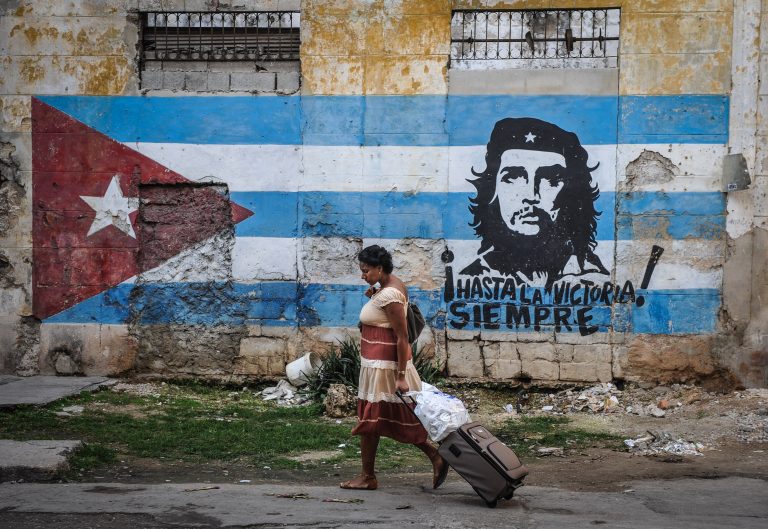
 Cubanet, Miriam Celaya, Havana, 5 January 2017 – It is well known that for almost six decades we Cubans have not had a real government program, unless the old “five-year plans” are defined as such. These were programs Castro I copied from the USSR in order to plan and control Cuba’s socialist economic development, and applied without the least success in Cuba.
Cubanet, Miriam Celaya, Havana, 5 January 2017 – It is well known that for almost six decades we Cubans have not had a real government program, unless the old “five-year plans” are defined as such. These were programs Castro I copied from the USSR in order to plan and control Cuba’s socialist economic development, and applied without the least success in Cuba.
It is worth remembering that, even in the USSR, these plans were not successful. In fact, almost one hundred years after the first Marxist social experiment, it has been sufficiently established that communism and success are irreconcilable, antagonistic categories.
In the end, Castro I departed this world leaving behind a crowded inventory of useless speeches and a history of failures as a ruler. In his decades at the helm of a country which he assumed as his personal property which, as such, he ruined with impunity, the would-be demiurge only managed to play victoriously one intangible card: his personal symbolic commitment as a “world-class revolutionary leader,” which allowed him to gather solidarity and subsidies which, undeniably, contributed to the support of his long dictatorship and helped to mask the national economic disaster provoked by his regime.
The year 2016 ended with two facts relevant to Cubans: the definitive death of the founding patriarch of this whole ill-fated circus and December’s anticipated announcement by the National Assembly that worse times will soon be upon us, not as a consequence of the failure and unfeasibility of the Cuban socio-economic “model” and the long demonstrated incapacity of the political guide of the country, but due to the “unfavorable” international scene, in the words of Castro II, the substitute head of the rink.
In his words, this scenario is derived from the capitalism crisis, and mainly from the “negative effects generated by the economic, commercial and financial blockade (…) which remains in force,” which means that “Cuba is still unable to carry out international transactions in US dollars” and this “prevents important business from materializing.”
In fairness, it is necessary to recognize that the panorama is really unfavorable for the Castro regime. The regional left has fallen into disfavor, several allied presidencies have collapsed, presidencies whose corruptions favored the entrance of foreign currency to the Palace of Revolution for a time, and, to put the icing on the cake of the misfortune of the olive green power, Venezuela is threatening to turn into a chaos that will drag in its wake that other second-rate dictator, Nicolas Maduro, which would slam the last source of subsidies for the Antillean autocracy.
Fifty-eight years later, the collapse cannot be hidden anymore, and Cuba seems to have entered a stampede phase. While the economy slows and the recession knocks on the door, the only Cuban production that continues to grow unabated is emigration, thus aggravating the outlook for the future of the nation.
Such a gloomy scenario, however, fails to move the government and the country’s economic policy and decision makers towards the search for real and effective solutions.
The Government, Ministers and Parliament gathered at the meeting of the first Assembly after the death of the Autocrat in Chief simply repeated the eternal formula (also eternally unfulfilled): more work, more controls and more savings, instead of proposing a viable program based on elementary and possible issues, such as liberating the economy, allowing greater participation of the private sector, removing investment barriers, reunifying the currency or stimulating the development of small and medium-sized enterprises.
There was talk of greater constraints when it was necessary to speak of more freedoms; of a slower pace when there should be more haste.
If we have had a bad leader and bad economic strategies to date, now we have neither leader nor strategies. This, however, is not necessarily worse. In the absence of a way out, sooner or later the second heir will have no choice but to move one of his tokens, against his better judgment. And history has shown that every move made within a closed and immovable regime will produce changes.
Meanwhile, 2017 has begun for Cubans with a general feeling not unlike disorientation, an aimless unguided journey, and skepticism. The same disorientation seems to seize the General-President, now orphaned by the mighty tree that gave him shade and protection throughout his life.
At least that was the image he projected during his brief address at the inaugural session of the National Assembly. Haggard and tired, the old deputy cast a speech full of cryptic phrases, complaints, reprimands, and even warnings at undisclosed recipients.
There were no promises, no itineraries, and no symbolic cut-throat shots fired. If anyone expected to hear a captain in command of the ship in the midst of the storm, he only found a hesitant and inexperienced helmsman.
But in a country where secrecy prevails, every gesture or word can be a signal to search for hidden meanings. That is why it was remarkable that instead of the triumphal “Motherland or Death” of the Fidel era, or “Always towards Victory” of the Guevara bravado, the General-President opted for a much more realist and meager closing: “That’s all,” he muttered almost in a sob.
And then he descended from the podium amidst the applause of his docile amanuenses, not the political leader of the rampant Revolution from which we could expect salvation in moments of crisis, but this tired and contrite old man. It is obvious that the government of the hacienda in ruins doesn’t fit. It is way too big for him.
Translated by Norma Whiting
